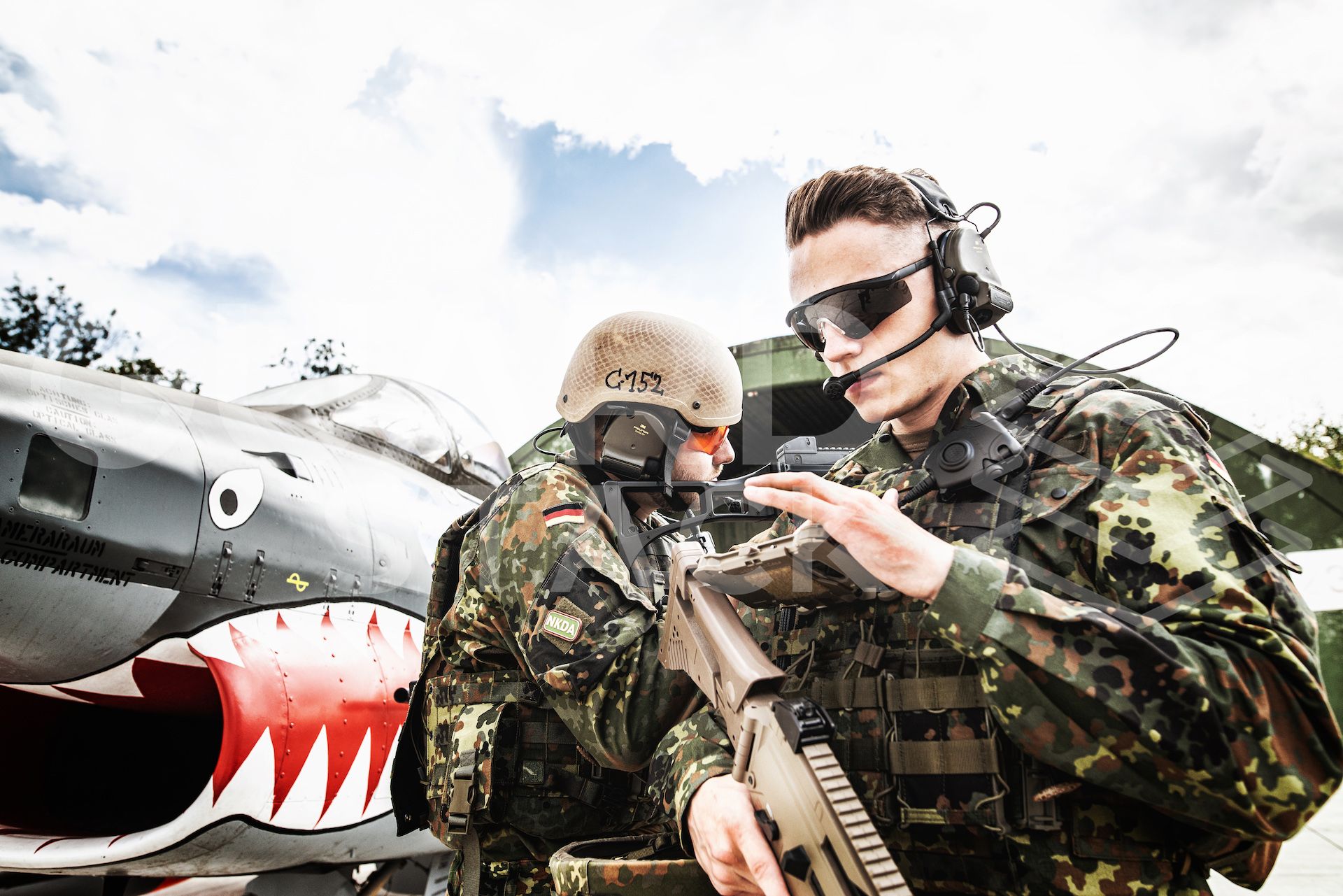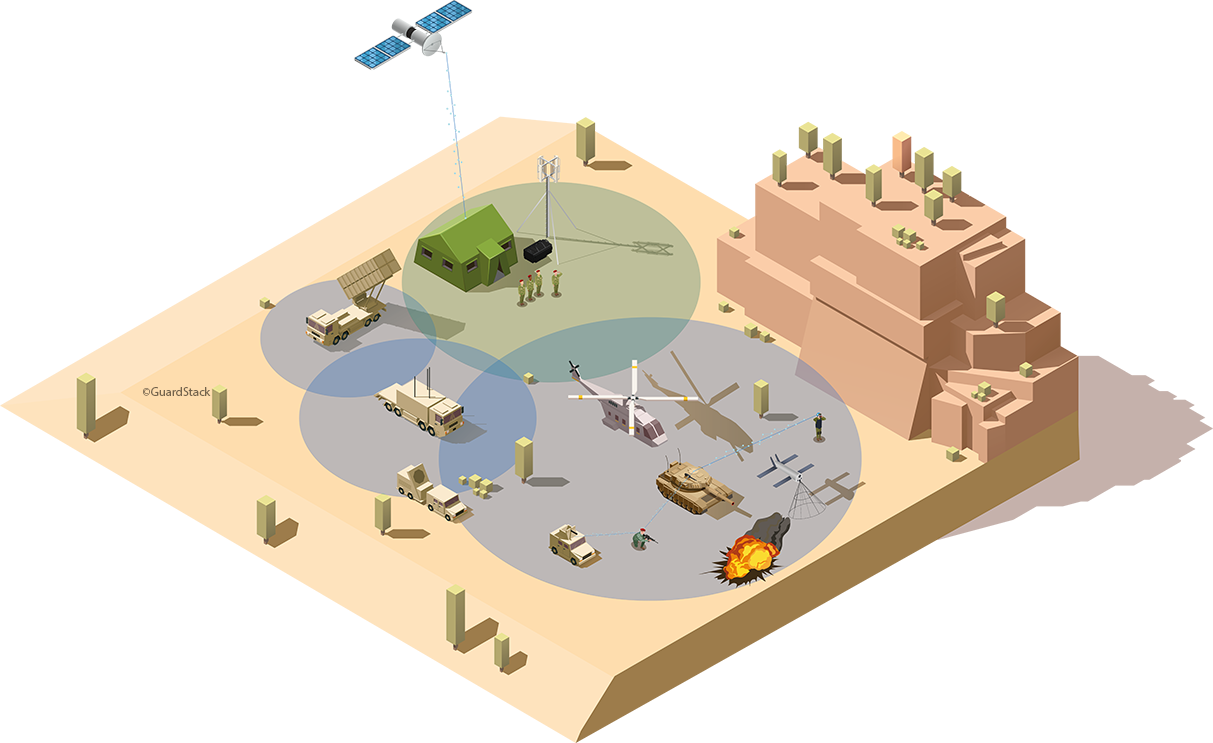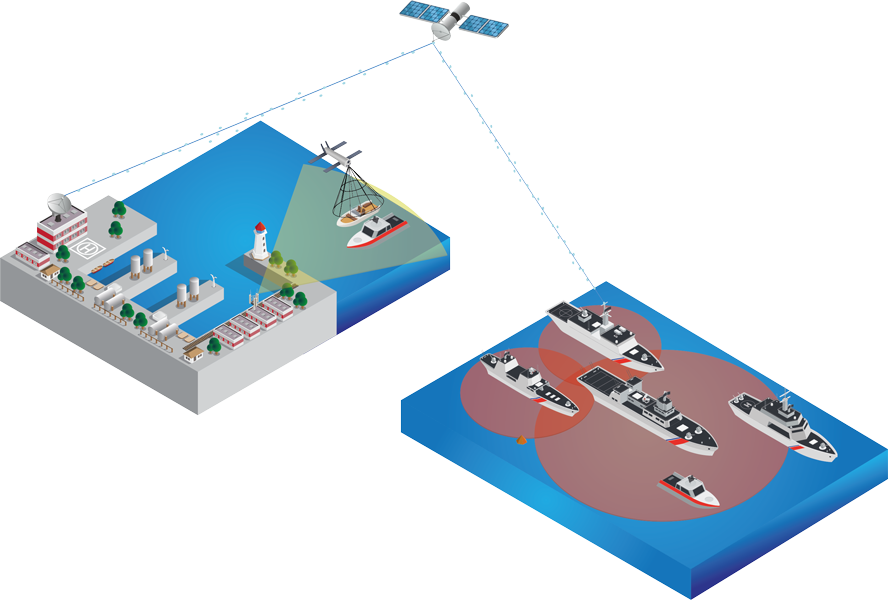-

Soldier System
The infantryman plays a central role in today’s complex military operations. As enemies are actively deploying cyber and electronic warfare it is absolutely essential that NATO members remain well-informed of the latest technology developments and capabilities, while maintaining existing field-proven tactical communication methods.
Unified Voice and Data
Conventional communication networks require proprietary radio and encryption technology to provide the exchange of information. Advanced technologies such as cellular broadband (5G) can improve C4ISR capabilities, sustainability, and mobility of modern military operations. GuardStack unifies voice and data communication for soldiers, offering a clear view of the tactical situation and bringing services where demand is the highest: the tactical edge.
With its unique modular architecture, it can adapt to any use case. GuardStack Soldier System creates a bridge between different access technologies, providing seamless interoperability for all services with legacy tactical radio systems and broadband communication systems.


Various transmission media and radios can be connected to the soldier via the PBH.
ALL IN – COMMUNICATION MEDIA ON ONE PLATFORM
In order to be able to effectively use the various capabilities of the different transmission systems that the dismounted soldier carries with him, a central platform is essential as an integrating component of the personal equipment. The Personal Body Hub (PBH) is a palm-sized device that is worn directly on the body and consolidates all interfaces for power supply, sensors, IT and communication equipment as well as other peripheral devices. This enables optimised cabling and the cross-sectional use of all connected devices across manufacturers.
Request Whitepaper
Please fill out this form so that we can send you the whitepaper.
This form is currently undergoing maintenance. Please try again later.Key features
Embedded 4G EPC / 5GC
Blue Force Tracking
Possible Use-Cases
Enhanced situational awareness at the tactical edge
Being part of a rapid response team, a soldier is called up for an urgent mission and immediately disconnects the Skype call with his family. While he is getting prepared for the mission, he inserts a secret HW element into his smartphone, enabled by GuardStack. The phone automatically switches to ‘Combat Mode’- a secure environment which contains all required applications and information for the mission.
After leaving the base, the tactical operation center is able to share intelligence and video feeds with the soldiers in their vehicles as well as tracking the vehicles using GuardStack’s embedded blue force tracking system.
Guardstack’s tactical core automatically selects another transmission medium with a better range (legacy VHF) to maintain voice communications as the end of the 4G / 5G coverage zone is reached.
Request Use-Case Paper
This form is currently undergoing maintenance. Please try again later.
Maritime Broadband services
A Coast Guard Squadron is using GuardStack to provide an independent off-shore communication infrastructure. The Squadron consists of a patrol vessel acting as tactical node in the network; multiple response boats; and a small unmanned aerial vehicle (UAV), all of which require communications at the tactical edge.
The offshore patrol vessel locates a suspicious boat several miles offshore and requires further information in order to make a positive identification. With communications protected against interception and disruption, the boats and the patrol vessel are utilizing GuardStack’s embedded Push-to-Talk and Video technology to communicate and share information with each other. Upon confirmation that the suspect boat is carrying illegal substances, a maritime interdiction is conducted and crew fingerprints are recorded and transmitted via GuardStack enabled long range transmission technology to the Coast Guard headquarters ashore to be crosschecked with criminal records.
Request Use-Case Paper
Please fill out this form so that we can send you the Use-Case.
This form is currently undergoing maintenance. Please try again later.
The four key pillars
for communication at the tactical edge
GuardStack’s Software Suite has been specifically designed to address the 4 most stringent communications requirements for the tactical egde.

Interoperability
Communication and information exchange at the tactical edge requires interoperability between various available access and transmission technologies in the lowest available Size, Weight and Power (SWaP).
GuardStack provides the secure middleware, connecting innovative and emerging broadband technologies such as 4G/5G with tactical radio communication technology such as long range VHF and UHF.
Provided services are automatically adjusted to available technology and capacity.
A secure Smart Phone acts as common control element for the dismounted soldier.

Self-Organization / Self-Healing
Communication networks for the tactical edge can not be planned in advance. The network must be very dynamic, following the mission without manual interaction.
Every GuardStack platform node senses and discovers nearby nodes and transmission capabilities. The node continuously and dynamically adapts to the everchanging network topology at the tactical edge. The platform choses the optimal path and provisions available services according to available access and transmission capacity.

Classified Security Domains
Information at the tactical edge requires stringent security measures but existing proprietary solutions prevent innovation, introduction of emerging broadband technology and economy of scale.
GuardStack Security enables multiple classified, end-to-end service domains, independent from the underlying transmission network and indepent of connectivity to central authentication servers, which are mostly unreachable from the tactical edge.

Network and User Mobility
Standard commercial networks are static and based on hierarchical archicture. Network mobility is typically referred to end-user mobility. Tactical networks on the other hand are often on the move, wether nodes are rapidly deployed, installed and operated on vehicles or airborne. All nodes and clients are constantly moving during the mission and require a fluent and self-healing mesh network.
GuardStack enables the communication network itself to be fully mobile. Seamless service continuity and end-user mobility between independent network entities (including Cellular technology) are enabled by GuardStack MeshFlow.